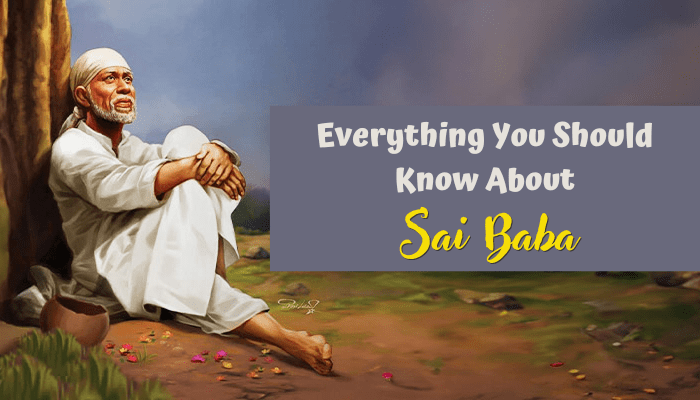One of the most venerated spiritual leaders in India, Shirdi Sai Baba is well-known for his teachings on religious peace, love, and compassion. Millions of people worldwide are still inspired by his life and miracles, despite the fact that his origins are still unknown. He is revered by both Muslims and Hindus, signifying religious harmony.
Early Life And Arrival in Shirdi
Although some sources place Sai Baba’s birth around 1838, the precise time and location of his birth remain uncertain. His parentage, religion, and true name are still unknown. He was born to Muslim parents, according to some, and Hindu parents, according to others. Sai Baba himself never verified his origins and frequently emphasized his confidence in God’s unity by saying, “Allah Malik” (God is the Master).
Around 1858, he made his first appearance in the Maharashtra village of Shirdi, which is located in the Ahmednagar district. He spent several years living under a neem tree, meditating and maintaining a modest life while wearing a basic kafni (robe) and a cotton cap.
Life in Shirdi: A Journey of Miracles and Message
Sai Baba spent the most of his life in the deserted mosque in Shirdi, which he named Dwarkamai. He preached the value of self-realization, love, and service to humanity while engaging in both Hindu and Muslim rites. Sai Baba promoted religious harmony by frequently using passages from both Hindu and Quranic texts.
He was renowned for his healing abilities, which included reading people’s thoughts, lighting lamps with water, healing the sick, and appearing in several locations at once. But instead of encouraging unquestioning faith in miracles, he emphasized saburi (patience) and shraddha (faith).
Sai Baba urged his disciples to see God in all living things, live moral lives, and assist others. He made it clear that the purest form of worship was selflessly serving others.
His Followers and Devotees
During his lifetime, Sai Baba gained a sizable following that included wealthy landlords, British officials, and ordinary villagers. Regardless of caste, religion, or social standing, he treated everyone fairly. Many of his followers went on to become lifelong learners and contributed to the widespread dissemination of his ideas.
Mahalsapati, Tatya Kote Patil, and Shreemant Gopalrao Booty were among the prominent devotees who helped to preserve and advance his legacy. Later, their stories and experiences were recorded in a number of publications and oral histories.
Teachings and Philosophy
The teachings of Sai Baba go beyond religion. He held the following beliefs:
- God was one, regardless of whether he was referred to as Ram or Allah.
- Treating everyone with kindness and decency is known as universal love.
- Charity & Aiding the Poor: He gave away everything he had to those in need.
- He frequently advocated the twin virtues of faith and patience as ways to overcome obstacles in life.
Although he didn’t create any books, his pupils and followers carried on his teachings.
Final Days And Mahasamadhi
On October 15, 1918, Sai Baba took mahasamadhi, or left his body. One of his followers, Shreemant Gopalrao Booty, eventually constructed the Shirdi Sai Baba Temple, also known as Samadhi Mandir, where his remains were interred.
His fame continued to rise quickly after his passing. Shirdi has grown into a significant pilgrimage site in modern times, drawing millions of worshippers annually from all over the world.
Also Read : Shirdi Travel Tips | Important Tips for Smooth Darshan Experience
Legacy
- Sai Satcharitra, a book written by Hemadpant, is considered the most authoritative account of Sai Baba’s life and teachings.
- Numerous temples dedicated to Sai Baba exist across India and abroad.
- His message of unity, love, and tolerance is still relevant in today’s world.
Conclusion
Beyond miracles, Shirdi Sai Baba’s story serves as a potent reminder of how compassion, humility, and faith can cut across religious lines. His life continues to inspire spiritual seekers toward harmony and peace and serves as a brilliant example of unity in diversity.




